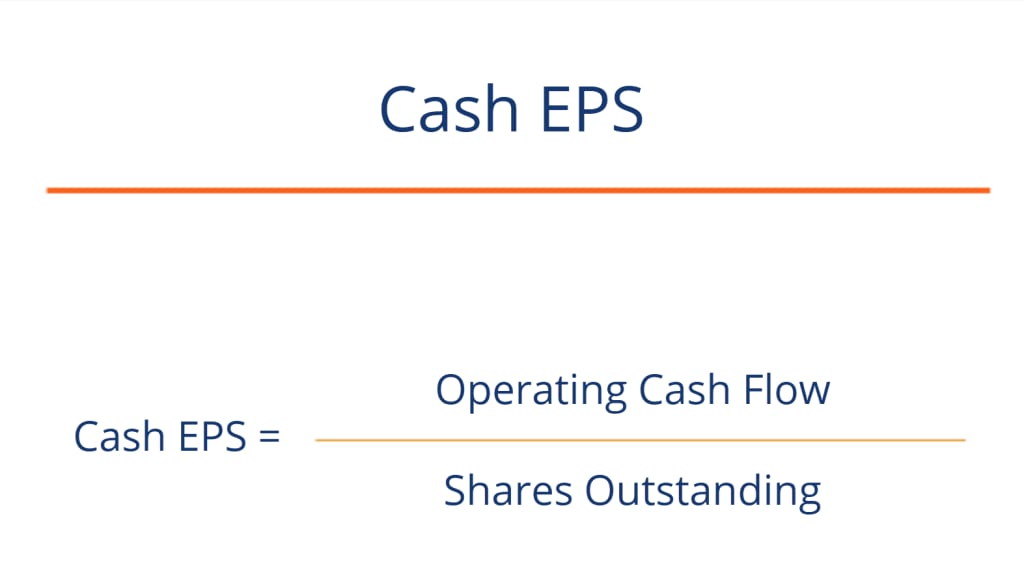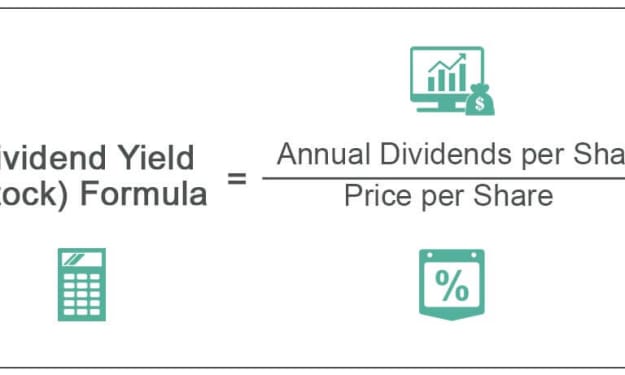Understanding Cash Earnings Per Share: A Key Metric for Investors
Understanding Cash Earnings Per Share: A Simple Example for Kids

When it comes to evaluating the financial health and performance of a company, there are various metrics that investors use. One such important metric is cash earnings per share (EPS). Cash EPS is a key indicator of a company's ability to generate cash flow from its operations and is widely used by investors to assess a company's profitability and financial strength. In this article, we will delve into the concept of cash EPS and explore its significance for investors, along with an example to illustrate its calculation.
Cash EPS is a measure of a company's earnings that focuses solely on the cash generated from its operations, excluding any non-cash items such as depreciation, amortization, or non-cash expenses. It represents the amount of cash a company has earned for each outstanding share of its common stock during a specific period, typically a quarter or a year. Cash EPS is calculated by dividing the company's operating cash flow by the total number of outstanding shares of common stock. It provides insight into how much cash a company is actually generating and can be used as a more reliable measure of a company's profitability than traditional EPS, which includes non-cash items.
One of the key advantages of using cash EPS as a performance metric is that it provides a clearer picture of a company's ability to generate cash flow from its operations, which is crucial for its sustainability and growth. Positive cash EPS indicates that a company is generating sufficient cash from its operations to cover its expenses, invest in growth opportunities, and return value to shareholders through dividends or share buybacks. On the other hand, negative cash EPS may indicate that a company is not generating enough cash flow from its operations and may need to rely on external financing or liquidate its assets to meet its obligations.
Let's take an example to illustrate the calculation of cash EPS. Suppose XYZ Corporation, a fictional company, has an operating cash flow of $1 million for the year ended December 31, 2022, and has 1 million shares of common stock outstanding. To calculate the cash EPS for XYZ Corporation, we would divide the operating cash flow by the total number of outstanding shares of common stock:
Cash EPS = Operating Cash Flow / Number of Outstanding Shares of Common Stock
Cash EPS = $1,000,000 / 1,000,000 shares
Cash EPS = $1 per share
This means that XYZ Corporation generated $1 in cash earnings for each outstanding share of its common stock during the year ended December 31, 2022.
It's worth noting that cash EPS may vary significantly from traditional EPS, which includes non-cash items. For instance, a company with high depreciation or amortization expenses may have a negative traditional EPS but a positive cash EPS, indicating that it is generating cash flow despite reporting accounting losses. Conversely, a company with non-cash gains, such as from the sale of investments or assets, may have a high traditional EPS but a lower cash EPS, suggesting that it may not be generating as much cash flow from its operations.
Summarise
Let's break down the concept of Cash Earnings Per Share (EPS) using a simple example that kids can easily understand.
Imagine you have a lemonade stand business with your friends. You all work hard and make lots of lemonade, and customers come to your stand and buy it. At the end of the day, you count how much money you made from selling lemonade. That total amount of money is like the cash earnings of your lemonade stand.
Now, let's say you want to know how much money each of your friends made from the lemonade stand. You can divide the total cash earnings by the number of friends you have, and that will give you the Cash EPS. It's like sharing the total money you made equally among your friends.
For example, if your lemonade stand made a total of $100 in cash earnings for the day, and you have 5 friends who helped you, then the Cash EPS would be:
Cash Earnings = $100
Number of Friends = 5
Cash EPS = Cash Earnings / Number of Friends
Cash EPS = $100 / 5
Cash EPS = $20
So, the Cash EPS for your lemonade stand would be $20 per friend. This means that each friend, on average, made $20 from the lemonade stand for that day.
Cash EPS is a way to measure how much cash a company or business is making for each share of stock that it has. It helps investors understand how profitable a company is and how much money it is making from its operations. Just like in the lemonade stand example, a higher Cash EPS would indicate that the company is making more money per share, which could be a positive sign for investors.
However, it's important to remember that Cash EPS is just one piece of the puzzle when it comes to evaluating a company's financial health. Investors should also consider other factors such as the company's expenses, debts, and overall performance before making any investment decisions. Just like how you would consider how much money you spent on lemons, sugar, cups, and other costs for your lemonade stand, investors need to look at the bigger picture when analyzing a company's financials.
In conclusion, cash EPS is an important metric for investors to assess a company's profitability and financial strength. It provides insight into a company's ability to generate cash flow from its operations, which is crucial for its sustainability and growth. By focusing solely on cash earnings and excluding non-cash items, cash EPS can offer a more reliable measure of a company's performance. However, it's important for investors to consider cash EPS in conjunction with other financial metrics and qualitative factors to gain a comprehensive understanding of a company's financial health and prospects before making investment decisions., Cash EPS is a measure of how much money a company is making for each share of stock it has, and it can be compared to how much money you and your friends made from your lemonade stand. It's an important financial metric for investors to assess a company's profitability, but it's essential to consider other factors as well. Just like managing a lemonade stand, analyzing a company's financial health requires careful evaluation and understanding of various financial metrics.
About the Creator
Tag Business
I Will Providing Various Company Information






Comments
There are no comments for this story
Be the first to respond and start the conversation.